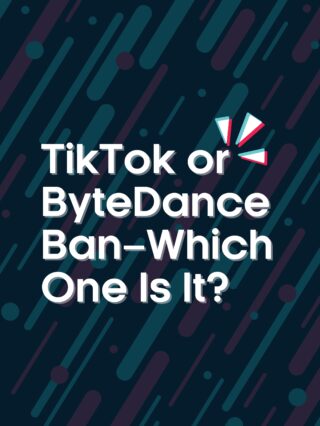Did you know that in 2018 there was a record $2 billion in ad spend across Over-the-top (OTT) and Connected TV (CTV)? The recent surge in ad spend, coupled with the novel tech infrastructure, leaves OTT and CTV advertising campaigns exposed to malicious fraud.
The threat of fraud in OTT and CTV will be, and should be, a leading topic among key contributors in the space. Our media teams recently explored ways to reduce the risk of exposure based on how inventory can be purchased; noting the benefits of private exchanges compared to the open exchange and things to consider as campaigns are negotiated.
Open Exchange vs. Private Exchange
Be cognizant of the publishers and the type of content that ads are airing in and consider how the publishers make their content available for purchasing.
Open Exchange:
- Mix of long- and short-form content.
- Ad exchange where multiple advertisers can bid in real-time for impression opportunities from any publisher with little fraud protections in place, if any at all.
- OTT and CTV inventory made available in open exchanges are generally from free apps with short-form clips of content that may not be held to the same level of brand safety and are not considered premium.
Private Exchange:
- Premium long-form content made available by a single publisher for a select group of advertisers.
- Premium OTT and CTV inventory is labeled as such because it requires authentication of user log-in credentials and the act of selecting desired programming. Think paid or free subscription-based models such as Hulu, Sling TV, or DirectTV Now. Each of these requires a username, password and unique credentials to access to specific, premium content.
- This type of content (and purchasing model) is the most sought-after for Butler/Till planned and executed media campaigns. Focusing exclusively on premium content allows for greater control, a focus on quality, brand-safe content, and multiple layers of ad fraud protection.
Activating on the Private Exchange
OTT and CTV inventory can be purchased in a myriad of ways; each offering the ability to layer on fraud protection. Recommending or selecting one over another should be dependent on the criteria for each campaign.
Direct to Publisher (i.e. Hulu, Sling TV, A&E Networks):
- Provides guaranteed inventory with a specific partner, more consistent cost per impression, and first party authentication data for targeting purposes. Having multiple layers of protection to prevent ad fraud is standard amongst publishers; look for those who are MRC accredited and who implement their own proprietary fraud filtering methodology.
Programmatic: 1:1 Private Marketplace (PMP) Deals:
- PMP deals guarantee a straight line of connection between a publisher’s content and the programmatic DSP. Like Direct to Publisher, its guaranteed inventory from a specific publisher that does not get exposed to the open exchange. The difference with PMP inventory is the deeper level of targeting and more omni-channel reporting it provides when activated through a programmatic DSP.
- Content from PMP deals bought programmatically are also subject to other layers of security in the form of companies like DoubleVerify or Moat, which ensure that impressions being purchased are airing where they are intended.
Programmatic: A Curated Marketplace for Purchasing Impressions:
- A curated marketplace is an aggregated supply of contextually relevant inventory across multiple publishers but not accessed via a PMP deal. Purchasing this way allows advertisers to select inventory that has already been scrubbed by the DSP to include reputable publishers that maintain a high level of brand safety and fraud protection.
- A curated marketplace is a great way to increase scale on any campaign as well as target specific content that may not be available via one specific source.
- When purchasing this way, specificity is key in order to select and leverage the types of content desired. Curation lets advertisers leverage the multitude of direct relationships that programmatic companies have with publishers to build an ideal premium channel list.
OTT Ad Delivery Platforms: (i.e. Premion, Compulse OTT):
- Companies in this space specialize in streaming video delivery and manage content in a similar fashion to PMP or curated marketplaces. They are not publishers or programmatic shops, rather aggregate inventory from multiple publishers and allow advertisers to purchase inventory at a flat rate.
- OTT delivery platforms have the same protections in place and are held to the same industry standards to prevent ad fraud as both programmatic and direct to publisher platforms.
While ad fraud exists in the OTT and CTV marketplace, we believe that the application of standard digital technology coupled with collaborative media partnerships enables greater protection as your campaigns avoid the open exchange. Being diligent and asking the right questions will position advertisers to get the most out of their OTT and CTV campaigns.
Interested in continuing the discussion or learning more? Please reach out to Gina Whelehan, Media Director at gwhelehan@butlertill.com.





